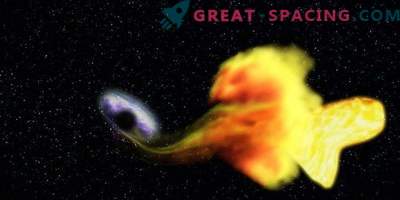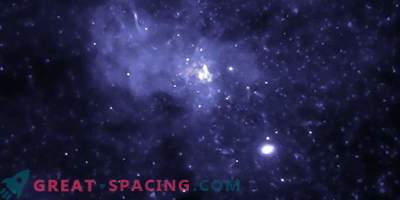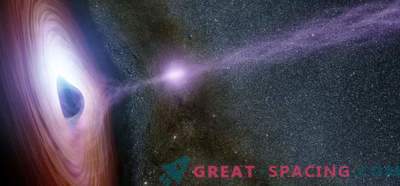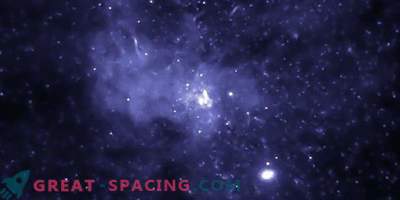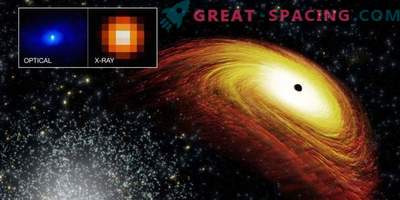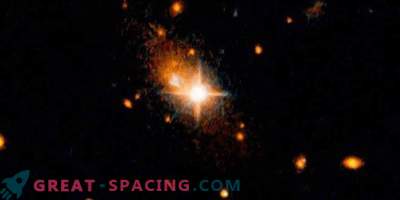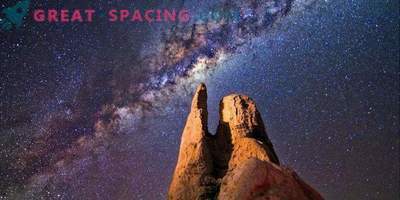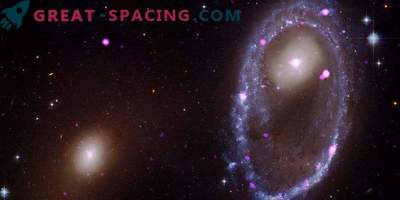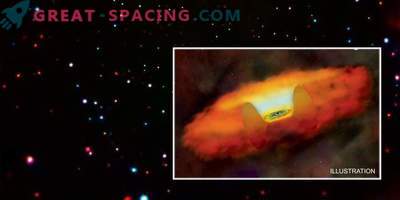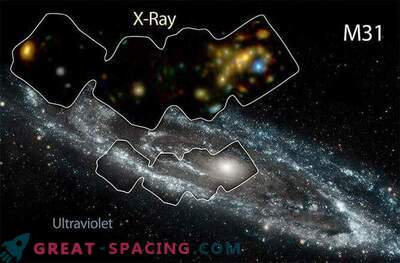
It seems that even black holes cannot resist the desire to become famous and rush into pictures without warning. New space photobomb found on the images of the approximate galaxy Andromeda. Most likely, we face the most densely connected pair of supermassive black holes.
The researchers found the finding by studying the X-ray data of the Chandra Observatory and optical information from Gemini (Hawaii) and the Palomar Observatory (California).
An unusual source was named LGGS J004527.30 + 413254.3 (J0045 + 41), when they noticed it in pictures of M31 (Andromeda). Earlier it was believed that J0045 + 41 is located inside a spiral galaxy, distant from us by 2.5 million light years. But the analysis shows that the couple is suspended from us for 2.6 billion light years, and therefore does not live in the galaxy.
Even more surprising, J0045 + 41 seems to hold a pair of giant black holes located on a close orbital path. The total mass is about 200 million times the solar one. Prior to this, periodic changes from J0045 + 41 have forced scientists to assume that this is a stellar pair at intervals of 80 days.
But Chandra's review changed the classification. Most likely, we have a binary system with a neutron star or a black hole pulling material from a nearby star, or at least one supermassive black hole is present. On the version with two black holes hinted data Gemini.
Then the researchers added information from the Palomar Observatory and identified several periods, including about 80 and 320 days. Their ratio leads to the dynamics of two large black holes that rotate around each other.
There is an assumption that black holes intersect each other at a distance of the Earth-Sun distance every several hundred times. A similar system could have been formed after the merger (billions of years ago) of two galaxies, each of which had a supermassive black hole.
It is impossible to find out the mass of each, but they must merge in 350 years or 360,000 years. If this is really a black hole merger event, then they will emit gravitational waves. But this signal is not available LIGO and Virgo, because they are able to capture signals from objects that exceed the Sun by massiveness no more than 60 times. This problem can be solved by the Pulsar Time Array.


